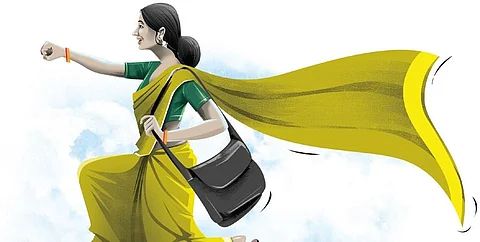

KOCHI: Kerala boasts of being the front-runner in ensuring women empowerment and gender equality. However, the representation of women in the state assembly over the years gives a different picture. Records show that women representation in the Kerala Legislative Assembly has never exceeded 10% during the 66 years since the state was realigned in its current form.
Interestingly, the poor representation of women in the assembly exists in a state where 50% of seats in local bodies have been reserved for women. While hoping that the passing of Women’s Reservation Bill -- granting 33% reservation for women in Lok Sabha and state assemblies -- will bring a transformation in the political sphere, observers highlighted the need for a change in the perspective of society to achieve the goal.
Kerala witnessed the highest representation of women in the assembly in 1996, with 13 women MLAs. The current assembly stands second with a total of 12 women legislators. The worst scenario was in 1967 and 1977, when Kerala had only one woman legislator each.

Experts pointed out that with the passing of the Women’s Reservation Bill, major political parties in the state have a tough task ahead of grooming women leaders with winning prospects. There are indications that the Bill will be implemented only by 2029. But once it is enacted, Kerala will have at least 47 women MLAs in the 140-member assembly.
Pointing out that political parties will have a tough task in identifying right candidates, political analyst J Prabhash said active participation of women in local bodies is an advantage for Kerala compared to other states as it can be an effective training ground for aspiring women candidates.
The state assembly currently has 12 women representatives. The representation of women candidates of the three major alliances - LDF, UDF, and NDA- in the 2021 election was less than 16%.
While NDA fielded 21 women candidates, LDF set aside 15 seats for women. The UDF had only 12 women candidates. Three constituencies -- Aroor, Kayamkulam and Vaikom-- witnessed direct fight between women candidates of the UDF and LDF.
“Not just the mindset of political parties, the attitude of society should also change to bring more women to leadership roles,” said Prabhash. We have witnessed ‘back-seat driving’ in local bodies and a similar situation can also arise in the assembly polls with leaders reserving seats for blood relatives in their constituencies, he said.
Political observers also point out that there is no clarity on implementation of the reservation as it has been delayed citing delimitation and census.
Citing the landmark Women’s Bill a right of women, writer and activist J Devika said the Bill would definitely create an impact in the long future. “It would give women an opportunity to play lead roles in an otherwise male-dominated politics. It will pave way for a social change by reducing gender disparity,” she said.
Once the Bill come into force, the women representation in Lok Sabha from the state would be six members. Currently, Congress MP K Ramya Haridas is the lone woman among the state’s 20 members. Of the nine MPs from the state in Rajya Sabha, the lone woman representation is also a Congress leader, Jebi Mather, president of party’s women’s wing state unit.
Interestingly, there were three women - Dakshayani Velayudhan, Annie Mascarene and Ammu Swaminathan - in the Constituent Assembly from the areas that now fall in Kerala. However, the state never had that much women representation thereafter.